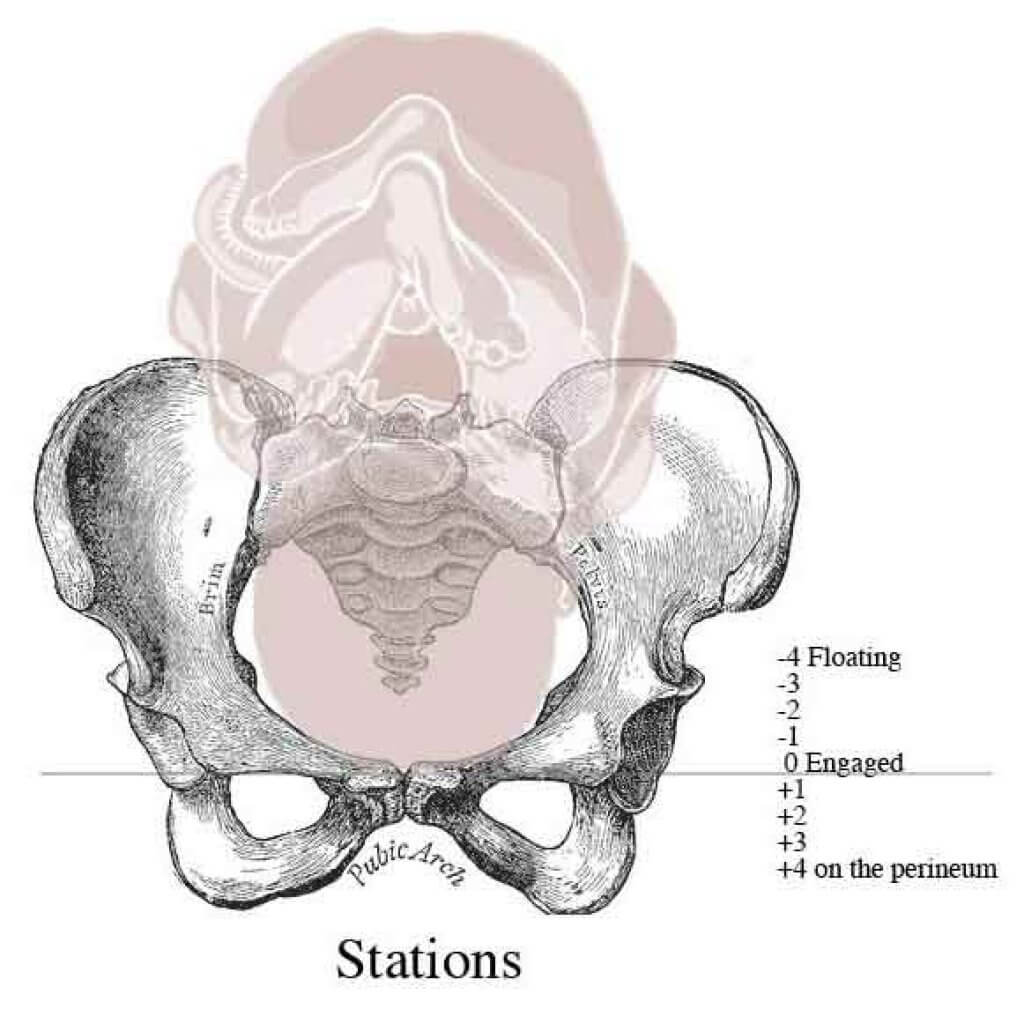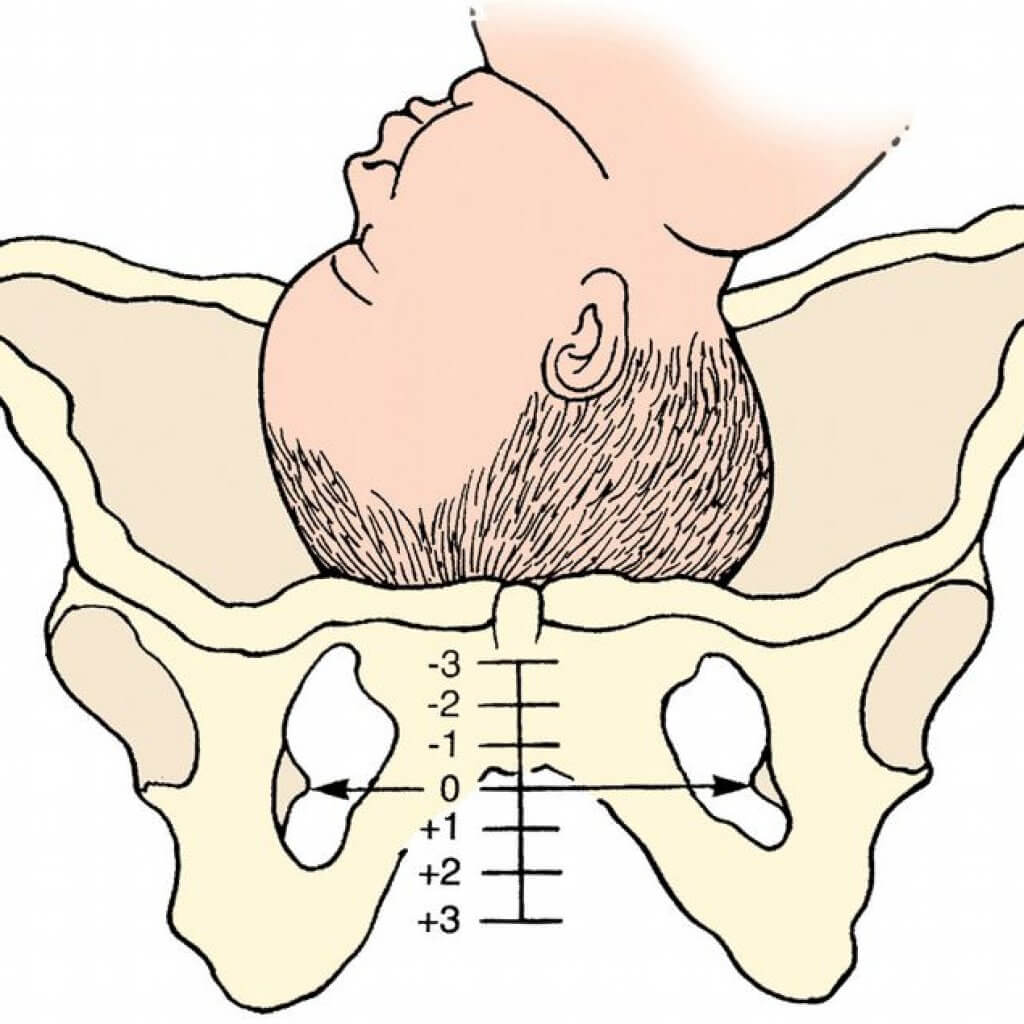Your Growing Fetus at 36 Weeks
Cradle a two-liter bottle of coconut water (or soda) in your arms, and that’s about the size of your little nugget this week at 18.7”!
- Now just about 6 lbs and still growing at the rate of an ounce a day.
- Baby’s liver and kidneys are complete and working and, blood is circulating throughout his or her tiny body.
- The immune system is ready to go in the big wide world and pretty soon, the baby will be able to breathe on his owns.
- Smoother, softer skin is happening daily and, those baby gums are rigid and ready to gnaw on your fingers! Can you believe it?
- Even so, baby’s digestion lags behind the rest.
- She doesn’t drink milk until after she appears in this world and even then she’ll having some adjusting to do.
- Stomach, intestines, and all the juices involved take a little time to get right, so there’s a lot of spitting up in the beginning.
- Get shoulder cloths ready and prepare to wipe it up.
- You’ve been waiting a long time for this little person so who cares about a bit of spit up?!
- Right about now is usually the time the fetus drops into your pelvis. This is called “lightening.”
- You might be able to breathe more easily because he’s not pressed up against your lungs anymore but because he’s lower now, he’s pressing on your bladder and increasing your need to pee more often.
- Some women don’t even notice any change for a few days, and it may not happen at all because some babies don’t lighten until you go into labor.
By now the baby is probably head down in what is known as the “cephalic position.” - If not, your OB or midwife will probably try to help the baby turn.
-
Acupuncture can be very useful in helping to “flip” a fetus, and there are specialists you can visit.
Pregnancy Superfood for Weeks Thirty-Six
Jicama is a crunchy “fruit yam” that looks like a potato, but it’s juicier and has a very mild taste as though, if it really tried, it might be an apple. It’s also considered a root vegetable with loads of fiber and vitamin C and that can lower the risk of preeclampsia. It’s also packed with iron and calcium and phosphorus which are great for bones and teeth.
It’s a perfect low cal, gratifying snack you can eat raw with any dip you love. Dice it up and add it to a salad for a lovely light sweet flavor and a good bit of crunch or boil it and enjoy it like a vegetable. Any way you want it, just wash and peel first.
If you’re not familiar with this versatile food here are a couple of quick recipes to introduce you to the variety of things you can do with it!
Jicima Fries:

Serves 4:
- Jicama 1 small (makes 2 cups fries)
- Avocado oil 2 Tbsp
- ¼ tsp each sea salt; garlic powder; cumin; smoked paprika (chili, onion or any spice you crave).
- Slice raw jicama into any kind of french fry shape you like.
- Boil in water for about 10 minutes then drain.
- In a large bowl, coat jicama with avocado oil and sprinkle with spices.
- Spread on baking pan and bake 30 min at 400F (turn occasionally) until crispy.
- Serve with your favorite dipping sauce.
Guess what? You can do this with radish and turnips, too!
Jicama Salad- Sweet and Spicy:
Serves 6:
- Jicama – 1 large, julienned
- Oranges – 2 medium, cut into chunks
- Red Bell Pepper – 1 diced
- Yellow Peppers – 3 small, sweet, diced
- Orange Peppers – 2 small, sweet, diced
- Thai Chile Peppers – 3 minced
- Jalapeno Pepper – ½ diced
- Radishes- 4 sliced
- Hot House Cucumber – ½ diced
- Cilantro – ½ bunch, chopped
- Lemon – 1 juiced
- Ground pepper – to taste
How to Prepare:
- Throw it all in a bowl, toss and refrigerate 30 min while flavors blend.
- Eat!
Top Tip for Week Thirty-Six
Even if you feel like you’re the size of a whale, there are still some yoga moves that can keep you fit. Thirty minutes would be perfect. Do the ones that make you feel good and let the rest go.
Make sure you don’t overheat and, if you have any health issues like high blood pressure or heart concerns it would be best to wear a heart rate monitor. Set it to go off when your heart rate reaches 140, and you’ll be within the safe range. Just ease up until it begins to drop.
If you have a Fitbit or similar device you can check around online and compare your info to other pregnant women. They’re posting resting heart rates as the pregnancy continues and changes during exercise. It’s a good way to let yourself know you’re right there with the rest of them.
Inspirational Message of the Week
“What good mothers and fathers instinctively feel like doing for their babies is usually best after all.”
Benjamin Spock
Big Efforts from your Co-Creator
While Mom is pushing and breathing and the doula, doc or midwife is orchestrating the action, you can make yourself feel a lot more useful if you know what’s happening. Before all begins, you can familiarize yourself with the probable progression of the birthing process.
It will help you know what to do, and you can provide mom with information as things progress. This may or may not be appreciated, but at least you won’t have to interrupt anyone with questions about what is going on.
No one knows how mom is going to react from minute to minute so be prepared to hang on and enjoy the privilege of being along for this ride. There is a lot of detailed information about this that you can look into and video to prepare you for what’s to come but these are the broad strokes.
For a first birth, labor can take from 15 – 20 hours, and it can last longer. A woman who has already had vaginal deliveries will average 8 hours of labor.

There are three main stages of birth that you should be aware of:
First stage: contractions begin the process as the cervix is dilated and effaced. Early labor starts from the beginning of labor until the cervix is dilated to 4 cm.
Active labor when things begin to speed up and contractions become more frequent, longer, and stronger until the cervix dilates to 8 – 10 cm.
Transition period moves into the second stage of labor. Very strong contractions that last a minute or more about every 2 1/2 to three minutes.
Second stage:
- Cervix is fully dilated and the “pushing” stage of labor beings. This could go on for minutes to many hours.
- Baby’s head moves forward with pushing until it “crowns” (the widest part of the head is visible). When the baby’s head is out, his or her mouth and nose will be suctioned and the neck checked to make sure it is free of the umbilical cord.
- When the shoulders rotate to position themselves to exit the pelvis you will see baby’s head turn to the side.
- The next push will be made with the contraction and each of the shoulders will deliver, then the body. It’s an exciting moment for everyone but there is still:
Stage three:
- As soon as the baby is out there will be more, less severe contractions as the placenta is delivered.
- Baby’s belly room is disengaged from his body as the cord is cut.
This Art of Allowing
You’ve probably gained around 25 to 35 lbs by now and it might seem like a good time to just take a load off and wait for these final weeks to play out but you may be pushed to do more than that.

Allow yourself to fully become The Vessel. No one expects you to move fast or to change the world just now so allow yourself to enjoy the unique and wonderful experience of being the vase that holds the rose. Sadly, this can be a demanding position.
Your OB may want to see you each week from now on, and an ultrasound may be given to reveal baby’s position and to locate the placenta. That’s great! Consider it another opportunity to see the little one.
If the baby is not yet in the head down position, you may need to have an “external cephalic version.” That just means that someone applies pressure to your belly to move the baby into proper position for delivery.
Breech birth is undesirable so pushing or lifting baby through your abdomen to avoid this is far less risky. This maneuvering could be uncomfortable, but sometimes medications are used to relax the uterus to make this easier.
Allow it all to wash over you. You and the baby are one. That’ll change soon enough.
Pregnancy Symptoms of Week Thirty-six
If the baby has dropped into your pelvis, you can breathe more deeply, but you may be feeling lots of pressure and even some pain. The ligaments around the pelvis start loosening up with the pressure, and this can be uncomfortable.

If it feels like you’re carrying a watermelon between your legs or you find yourself waddling like a penguin you are on target. The widening of the pelvis demands a change in gait. Slow down, sit whenever you want, it’s perfectly normal.
Sleeplessness: If you wake up in the middle of the night or never really go to sleep until early in the morning, then you have lots of company. Pregnancy is like that. You could also be experiencing a little acid reflux and not realize it. Warm your feet and find a breathing pattern that relaxes you. Sleep is necessary now.
Heartburn: can still be a problem even after the baby drops. Antacids help if your doctor approves. A nice cup of warm water with some ginger and a drop of lemon for taste could go down well.
Swelling: of your feet or ankles is to be expected but if it’s sudden or severe call your doctor right away. Edema can be serious but, if the swelling is merely more of the same, this could go away right after delivery. For now, try a foot soak in Epsom salts and absorb some good magnesium while you enjoy the relaxation.
Braxton Hicks contractions: may be more common and noticeable as your body continues to practice for delivery. Review the signs of labor to make sure you know the difference. These contractions feel like a tightening but, if pains accompany these like menstrual cramps, you want to call your doctor or midwife.
Vaginal discharge: You could see an increase in discharge this week. If it’s the usual stuff that’s absolutely normal but, anything out of the ordinary requires a call to your doctor.
What to watch for: amniotic fluid would be a watery discharge; any blood can be a sign of preterm labor; some thick mucus or discharge with streaks of blood can be the mucus plug coming out and, that means you are very close to labor.
If everything is normal, and your pregnancy has no complications you should ask your doctor or midwife to give you exact instructions on when to consider yourself in labor.
You want to know when you should call the team together or when to go to the hospital or birthing facility.
If your water has not broken, it is common to wait for contractions that last at least a minute and happen every five minutes per hour. But check with your professional.
There are a few symptoms for which you should immediately call your doctor:
- A sudden or noticeable decrease in baby’s activity
- Leaking amniotic fluid
- Vaginal bleeding
- Fever
- Severe and/or persistent headache
- Persistent abdominal pain
- Vision changes.
Hopefully, all is well, and there are no complications but, at this stage of pregnancy, any traveling should be limited. Talk with your doctor or midwife and discuss distances that are considered safe and avoid air travel. Airports are exhausting, and you don’t want to have a baby in flight. You can go into labor at any time, and this is an early term so it’s better to stay close to home where you can get plenty of help if you need it.
Our Recommended Remedy for Week 36
About that pressure in your pelvis… swimming or just bobbing in the water can provide some relief. You might not be up for a full pregnancy aquasize class, but there are probably some pools that honor your condition and may provide a quiet corner for pregnant ladies and tots.
Water is soothing for your body and your mood. It also puts you in tune with baby’s condition right now, floating in the amniotic fluid. But you probably shouldn’t try head down in the pool right now!
Our Best Advice to Soothe The Uncomfortable
You can breathe again. Great! Now it’s time to start singing! Your body loves vibration and oxygen, and singing gives you both. And whatever is good for you is good for the baby. You’ll want to sing a little something to baby now and then when he’s fussy or when she needs to sleep.
Have you got a favorite from your childhood? Is there something on the radio now that just nails the way you’re feeling? Write a list of songs you’ll be singing to the baby and practice them full-voiced and right out loud. Why not?
It makes you feel good, takes your mind off fact that it can take forever to get off the couch, that you waddle now instead of sprinting. The extra oxygen is both relaxing and energizing and memorizing lyrics (instead of faking your way through it) is a good brain exercise.
Preparation for Motherhood
- If you’re still working, make sure everyone knows how your maternity-leave plan will work. When you plan to leave and what you’re willing to do while you’re home. You don’t want to have to think about anything else for a while if you can help it.
- Do you have all the phone numbers, email addresses and other media info for sending out the birth announcement? If you plan to do it yourself make sure you have all the information together in the same place and the order in which you want to use it. If you’re having someone else do it then make sure they know exactly what’s expected.
- Friends and family want to know so they can share your joy, and you don’t want anyone feeling left out because your friend (or sibling) dropped the ball and didn’t tell your close relatives before your casual friends.
- No grudges, please! Organization and accountable help can save you a lot of trouble later on because family dynamics are trickier than quantum mechanics.
Week-by-Week Pregnancy Guides
1 Week
2 Weeks
3 Weeks
4 Weeks
5 Weeks
6 Weeks
7 Weeks
8 Weeks
9 Weeks
10 Weeks
11 Weeks
12 Weeks
13 Weeks
14 Weeks
15 Weeks
16 Weeks
17 Weeks
18 Weeks
19 Weeks
20 Weeks
21 Weeks
22 Weeks
23 Weeks
24 Weeks
25 Weeks
26 Weeks
27 Weeks
28 Weeks
29 Weeks
30 Weeks
31 Weeks
32 Weeks
33 Weeks
34 Weeks
35 Weeks
37 Weeks
38 Weeks
39 Weeks
40 Weeks














